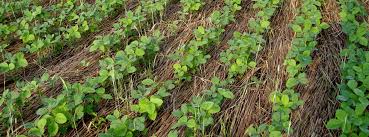Cover crops can provide multiple benefits. For example, they can improve soil health, supply nutrients to cash crops, suppress weeds, help manage insect pests, produce forage, support pollinators and beneficial insects, and reduce water and air pollution. However, not all cover crop species provide the same benefits. How can you best reap the multiple benefits of cover cropping with so many species to choose from? To multiply and diversify your cover crop benefits, plant mixtures.

This article will describe some of the basic concepts to consider when planning a cover crop mixture. Selecting complementary species to meet different farm management objectives, timing planting and management correctly, and using effective establishment and termination methods are all important for successful cover crop mixtures. Information in this article is based on the research and experiences of a multidisciplinary team of researchers, educators, and farmers who have been evaluating cover crop mixtures in the northeastern United States. Most of our experience with cover crop mixtures is in organic feed crop rotations in temperate humid climates where cover crops are used during overwinter fallow periods. Despite the regional and cropping system specificity of our experience, many of the principles described in this article can be applied to a variety of farming systems and climates.




Post a comment
Report Abusive Comment